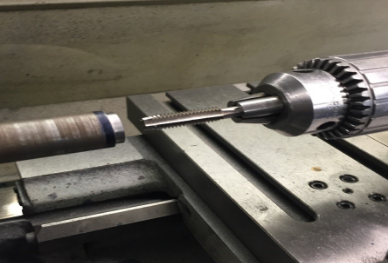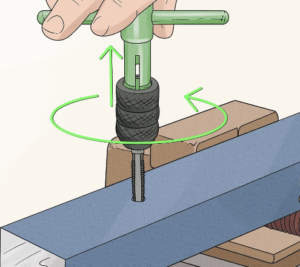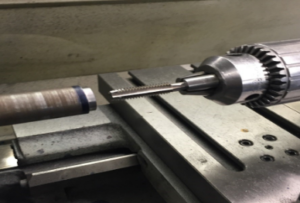
Tapping is the process of cutting a thread into an existing hole in a workpiece. This is done to create an internal thread so that the piece is able to accept a fastener such as a screw.
Tapped holes are commonly used in engineering to join metals when a nut and bolt can’t be used. They can also be used in woodworking.

Man vs machine
Tapping can be done by hand or by machine.
Manual or hand tapping involves the use of a special tool known as a tap. This is inserted into the existing hole and then turned in a clockwise direction whilst pressure is applied in order to cut the threads inside. A skilled operator is needed to make sure that the threads are cut correctly. Hand tapping is best suited for smaller holes and threads.
Machine tapping utilises a drill press or CNC machine to cut threads into holes. As with the manual process, the tap is inserted into the existing hole and rotated clockwise but, in this case, it is the machine that applies the pressure which enables the tap to cut the thread. Tapping machines are able to tap at speed and can be used for larger holes and threads. Machine tapping is quicker than manual tapping.
Benefits of thread tapping
There are many benefits to thread tapping, notably its versatility, precision, strength, efficiency, cost-effectiveness, and the fact that it keeps waste to a minimum.
Tapping machine specialists
If you feel that a tapping machine could be the solution you have been looking for or would like to find out more, specialists such as Cotswold Machinery can offer advice as to which machines will be most suitable.

Types of tapping machine
Tapping machines can be electric, where the tapping arm is powered by an electric power pack, hydraulic, which requires a hydraulic power pack, or a pneumatic tapping machine, which is driven by compressed air.
Many machines can be configured to undertake repetitive tapping tasks and can deliver high levels of accuracy.
